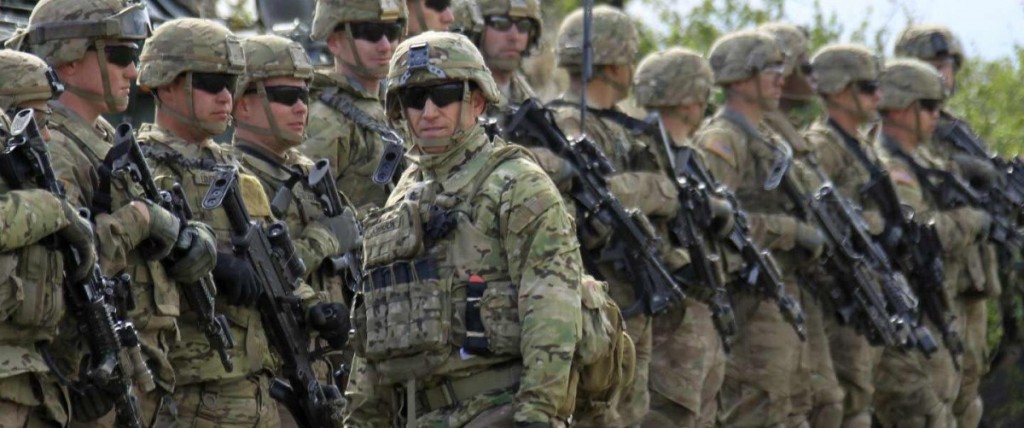Sourced : Foreign Policy
By Paul Macleary
The top general overseeing America’s wars told Congress Thursday that more U.S. troops will likely be needed in Afghanistan to help train and advise Afghan forces, and left the door open to sending more U.S. forces into Iraq and Syria to fight the Islamic State.
The comments by Gen. Joseph Votel, head of U.S. Central Command, come amid rapid changes in the U.S. military posture in the region. Just this week, approximately 400 U.S. Marines deployed to a base near the ISIS stronghold of Raqqa, Syria to assist U.S.-backed Syrian Democratic Forces as they move on the city. Additionally, U.S. Army special operations forces were rushed to northern Syria to act as a buffer between the SDF and Turkish-backed militias who had been threatening their bases around the city of Manbij, and American warplanes unleashed a new wave of bombing runs on al Qaeda in Yemen.
Taken together, the deployments and air raids signal a willingness by the Trump administration to escalate American military involvement in fighting the Islamic State and al Qaeda in some of their long-held sanctuaries. The expanding military operations, however, run counter to Trump’s campaign rhetoric, in which he scoffed at the idea of “nation-building” or being drawn into overseas missions. But he has consistently vowed to defeat Islamic State and other extremists.
The deployments raise questions about the overall U.S. policy in the Middle East and other jihadist hotspots like Somalia or northern Africa. U.S. military commanders have been careful not to portray the recent moves as a broad change in existing policy, but instead as plans long in the works. One former Obama administration official told FP that the strikes in Yemen and troop increases in Syria are “really more of a continuation than a departure from Obama administration counterterrorism policy,” albeit significantly accelerated from the ponderous way the Obama team made its decisions.
Asked for his recommendations to the Trump administration on next steps in the longest war in American history, Votel told the Senate Armed Services Committee that in Afghanistan, “I do believe it will involve additional forces to make the advise-and-assist mission more effective.”
It’s not just a question of more boots on the ground. Votel said that bringing in more troops would involve rewriting the current strategy that keeps most U.S. soldiers in an advisory role, and in which commandos can only engage in combat if they’re fired on.
If the administration follows the military’s advice, it would mark the reversal of a years-long trend in Afghanistan that has seen the U.S. military’s presence steadily decrease to about 8,400 troops from a peak of about 100,000 troops in 2010 and 2011.
Votel’s comments echo those made last month by the Gen. John Nicholson, head of the U.S. mission in Afghanistan, that he would likely need “a few thousand more” troops to take part in the training mission. The number of Americans in the fight fluctuates from month to month, as Nicholson has the ability to pull in hundreds of troops at a time on a temporary basis to act as what the military calls “enablers” to buttress the coalition’s efforts. Their short-term deployments don’t count against the cap on the number of U.S. troops officially acknowledged to be in the country.
In January, the Pentagon announced that it was preparing to deploy 300 Marines to the restive Helmand province in Afghanistan’s south, which saw some of the fiercest fighting during the war’s worst days, and is the site of vicious fighting between government forces and a resurgent Taliban. But the former rulers of the country are hardly the only threat. On Wednesday, ISIS militants dressed as doctors entered a military hospital in Kabul and slaughtered 30 doctors, nurses, and patients in the group’s bloodiest attack in Afghanistan to date.
Votel also said he is open to expanding the U.S. military footprint in Iraq and Syria, where there are already approximately 6,000 troops on the ground. “I think as we move more towards the latter part of these operations into more the stability and other aspects of the operations we will see more conventional forces requirements,” he said. He declined to offer any numbers but experts and congressional aides say the reinforcements could range from hundreds to thousands of troops.
In Syria, in addition to the Marine base near Raqqa, there is also a U.S. Army-run logistics hub dubbed Forward Operating Base Thomas near Kobani in Syria’s north, and a Special Operations base closer to Manbij, as well as several U.S.-run training centers for the SDF.
In a trip to the region last month, Gen. Votel brought a handful of reporters — including FP — along to see these outposts. But even outside of Syria, the growing U.S. footprint in key areas of the region was apparent.
At one air base the U.S. military would only describe as being located in “Southwest Asia” due to host nation sensitivities, American F-15s and Belgian F-16s flew round-the-clock missions into Iraq and Syria. One area of the base had recently been given over to the U.S. and its NATO allies to build permanent housing for hundreds of troops and pilots, along with a U.S. Army unit that operated a HIMARS precision rocket system.
“We’re still pouring a lot of concrete in the region — more than I would have thought” at this point in the war, one former Obama administration official told FP.
While touring an air base known as “Reaperland” for the number of drones it hosts, Votel told reporters traveling with him that as the SDF pushes closer to the Islamic State stronghold of Raqqa, U.S. forces may have to take on “a larger burden ourselves. We have to look at the variety of things that can be done, there are a variety of forces that we can potentially bring in to do this.”


